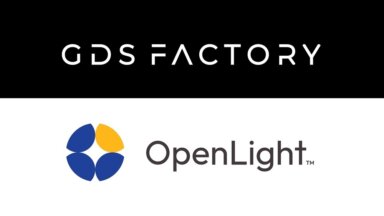
Press releases
The future of LiDAR is 4D, using Frequency-Modulated Continuous Wave technology.
Adam Carter’s interview with Dan Carney of Design News explains how 4D LiDAR technology will increase automotive safety.
Current LiDAR technology measures the laser signal’s ‘time of flight’ to establish location and distance. Frequency-modulated continuous wave (FMCW) LiDAR does this too, however, by working more like radar, it measures the Doppler shift of the signal’s frequency, to establish velocity. The FMCW signal is transmitted coherently and received coherently, giving it a longer range. The resulting LiDAR device is more effective in adverse weather conditions, such as fog, mist, rain, and glare, as well as being less susceptible to interference from other LiDAR systems.
Producing FMCW LiDARs using conventional production technology has been prohibitively expensive, due to the complex assembly and optical coupling of the multiple discrete components required. However, OpenLight’s photonic, application-specific, integrated circuits (PASICs) offer a revolutionary integration of lasers, electro-absorption modulators and semiconductor amplifiers, reducing costs and making 4D-LiDAR viable.
4-D LiDAR benefits include:
- Long Range Performance: Detect, classify, and track dynamic objects such as vehicles, cyclists, and pedestrians at long distances.
- Ultra Resolution: A real-time, camera-level image that provides up to 20 times the resolution of conventional, 3D LiDAR sensors.
- Road Hazard Detection: Spotting small objects on the roadway with greater confidence at up to twice the distance of conventional, 3D LiDAR sensors.
- 4D Localization: Estimating vehicle motion in real-time with six degrees of freedom for accurate positioning and navigation, without the need for additional sensors, such as IMU or GPS.
Please click the link to read the full article: https://www.designnews.com/aut...
More Press releases

OpenLight and DoplayDo Expand Silicon Photonics Ecosystem with GDSFactory Support
The collaboration will drive broad adoption and accelerate the integration of silicon photonics chips for datacom, AI, sensing, LiDAR technologies,…

eeNews Europe's interview with Dr Adam Carter at ECOC 2023.
Nick Flaherty of eeNews Europe interviewed Dr Adam Carter during the European Conference on Optical Communication (#ECOC2023), in Glasgow.

Read SemiWiki's recently published ‘CEO Interview’ with Dr. Adam Carter
SemiWiki’s insightful ‘CEO Interview’ with Dr. Adam Carter, by Daniel Nenni, describes OpenLight’s unique technology and business model.